
A Cave Adventure at Ledge View Nature Center
September 19, 2024 | Topics: Places, Stories
By Eric Fowle and Louise Marum
Photography by Eddee Daniel
The morning of our tour was a steamy 80° and climbing as we began the hike. Hot and humid: perfect conditions for a cave appreciation adventure! We were at the Ledge View Nature Center just outside the City of Chilton in Calumet County—the heart of the Niagara Escarpment corridor in Wisconsin. And it may sound odd to extol the heat, but the reason for this enjoyment is that the highlight of our tour was an underground experience in Carolyn’s Caverns where the temperature is a constant 55°. Refreshing!


Our group of nine began at the environmental education center, which includes displays of local flora and fauna (like bats!), along with interactive exhibits. Our 2.5-hour tour covered only about one-quarter of the County-owned, 105-acre park. Best known for its caves, the park also contains woodlands, dolomite ledges, a large open prairie, a 60-ft observation tower, an arboretum, an inactive quarry and a nature-themed play area—all threaded together with three miles of trails.
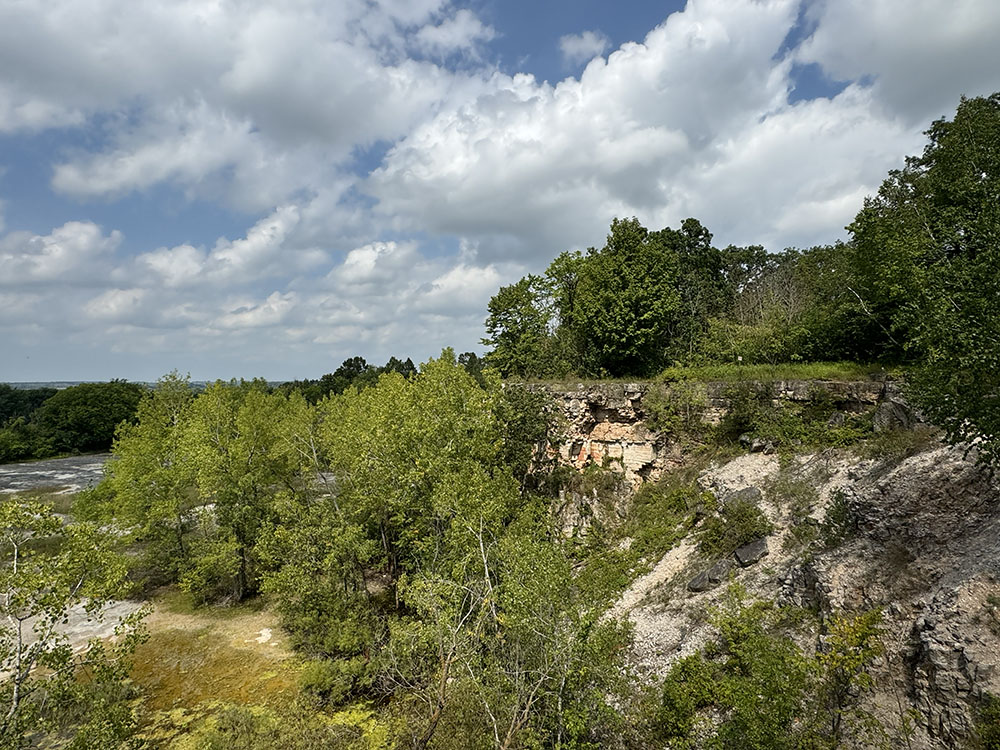
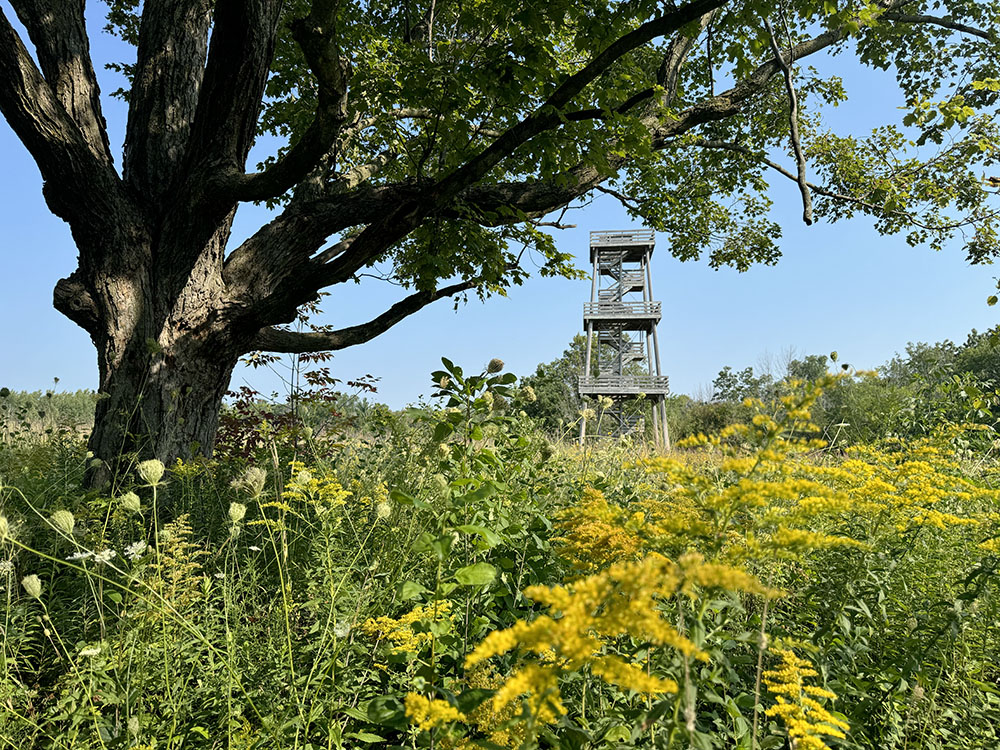
We hiked past the arboretum, skirted the prairie with its observation tower, through the woods and down to the base of the escarpment outcropping, which is unusual in Wisconsin because it faces east instead of west. Along the way, Louise, the park’s full-time Naturalist, pointed out various plants and answered questions about the area’s ecology, common vegetation species, and efforts to control invasive species such as buckthorn, which exists in significant amounts in the woodlands. Some of the more exciting ‘finds’ included a green tree frog, and a cluster of coral mushrooms!
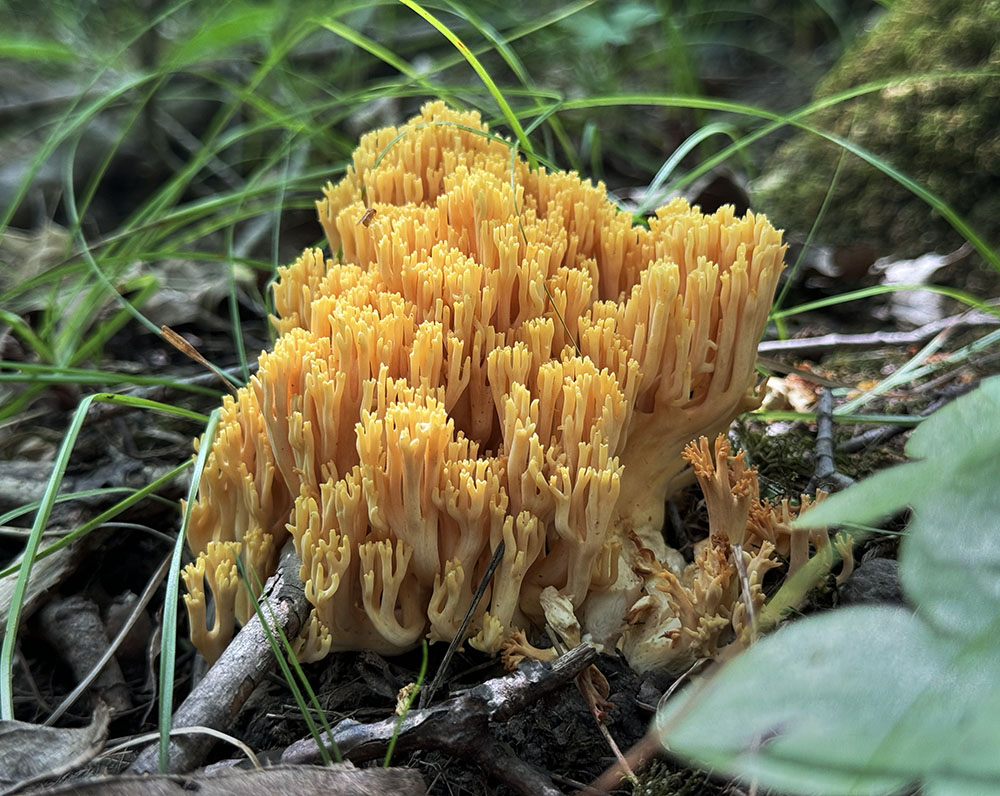

As we walked beside the cliff face, Eric provided an overview of the bedrock and glacial geology of the Niagara Escarpment. He shared insights on karst formation, micro-climates, and cultural aspects of this great rock ridge, which extends in a great arc from New York State, around three of the Great Lakes and down the eastern edge of Wisconsin. The dolomite that makes up the escarpment is a particularly hard form of limestone, which is an ancient sedimentary rock comprised of minerals, organic matter, pre-existing rock and the compacted shells of marine organisms like snails, clams, and corals.

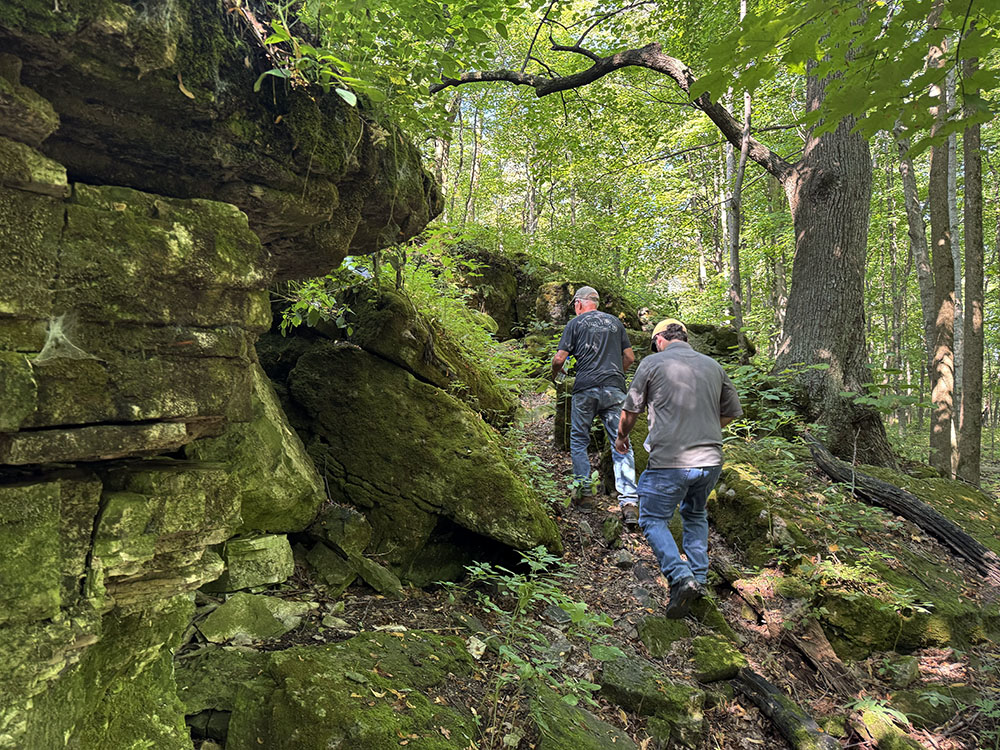
We then climbed up a large fissure in the cliff and made our way to the entrance of the caverns, which is accessed through a naturally occurring sinkhole in the dolomite surface. We descended into the coolness of the cave.
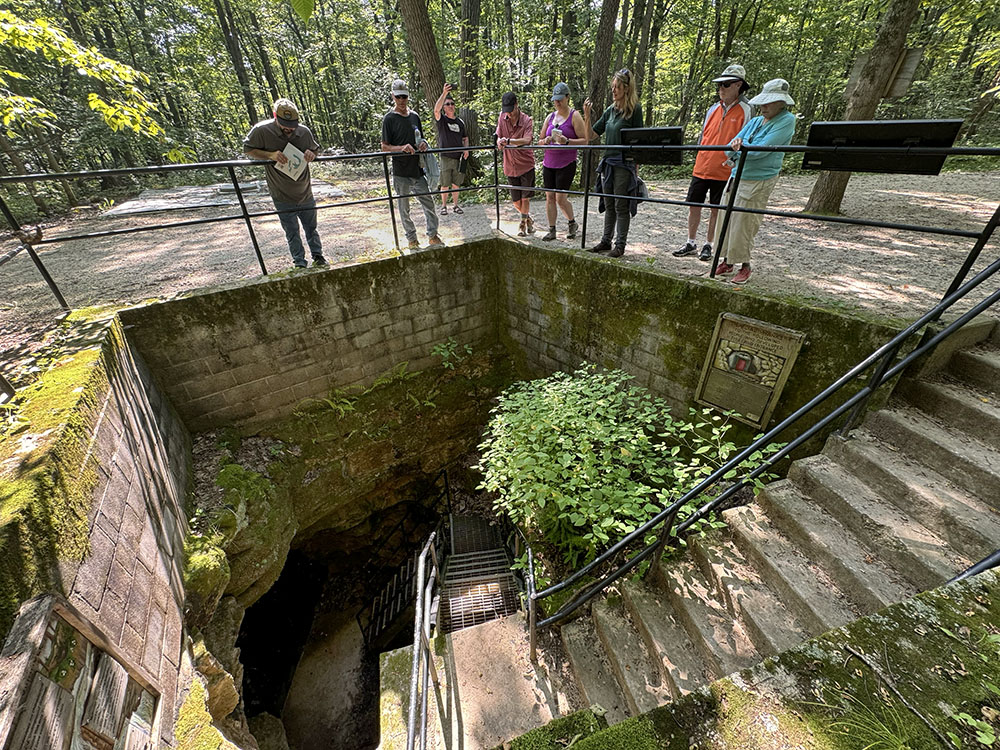

There are five named “rooms” in Carolyn’s Caverns, all with connecting passageways (though some require a bit of ducking and crawling, which most of us skipped). The main entrance opens into the Bat Room. There Louise explained the geology of caves and the cave formation process. These are limestone dissolution caves, she told us, which are the most common cave type. Rainwater slowly dissolves away at the calcium carbonate rock. As rain falls from the sky, it picks up carbon dioxide from the atmosphere and becomes a weak carbonic acid. The start of the dissolution begins along joints, bedding planes and fractures in the rock. Over time, cavities form, widen and deepen as water continues to dissolve it. Underwater streams and rivers may form.


True to its name, little brown bats hibernate in the Bat Room (and others). Since we had entered through a door that seals the cave when not being toured, someone asked how the bats get in. They can wriggle through very small fissures in the rock, Louise said, just like the roots we all marveled to see hanging from crevices in the ceiling. Eight bat species are native to Wisconsin, of which four utilize the caves for hibernation. The others migrate for the winter, like birds. We didn’t see any bats though. Hibernation begins around mid-November.


Moving on to Wayne’s World (those who discover caves get to choose names), Louise shared stories of past tours, safety protocols, and the cave digging process. Yes, these caves were filled nearly completely with glacial sediment! She also used her flashlight to point out small fossils visible on the ceiling.
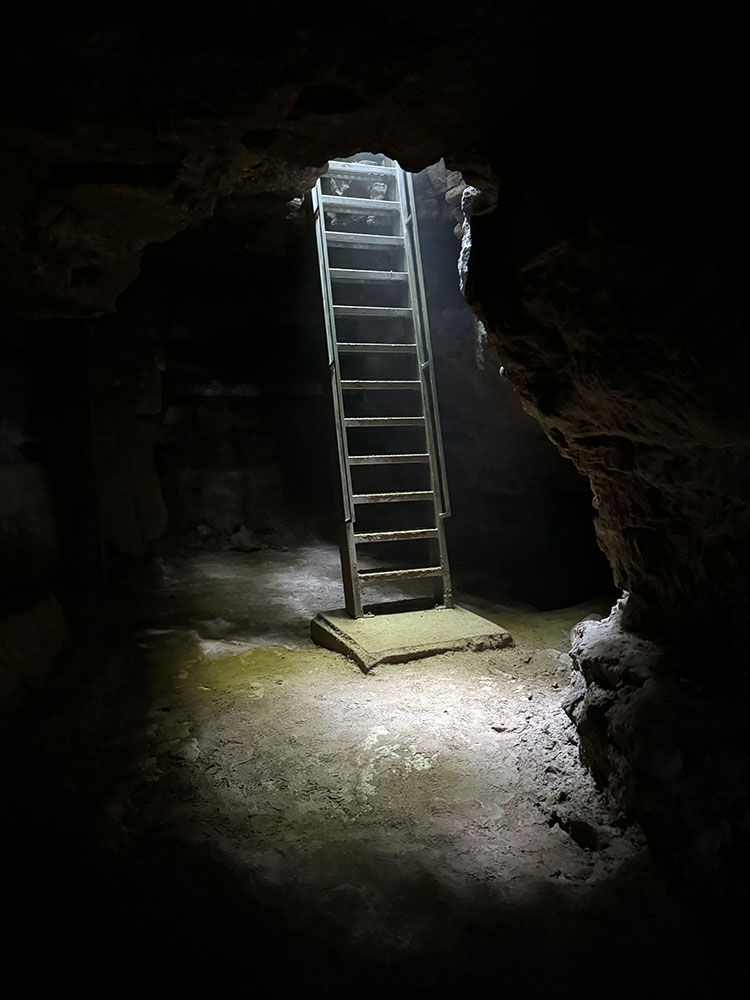
After an hour underground we emerged back up into the mid-day heat.
Overall, it was a great day to explore the Escarpment, particularly its underground wonders. Thanks go to Calumet County and the Friends of Ledge View Nature Center for their generosity and commitment to preserving and enhancing one the best sites along Wisconsin’s Niagara Escarpment.


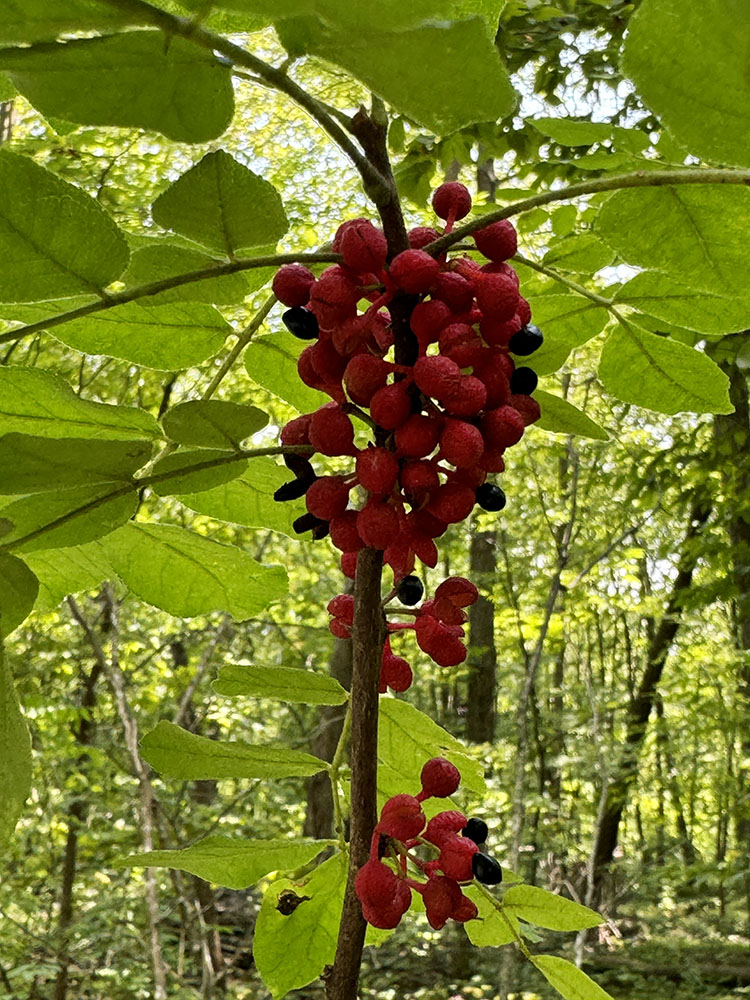
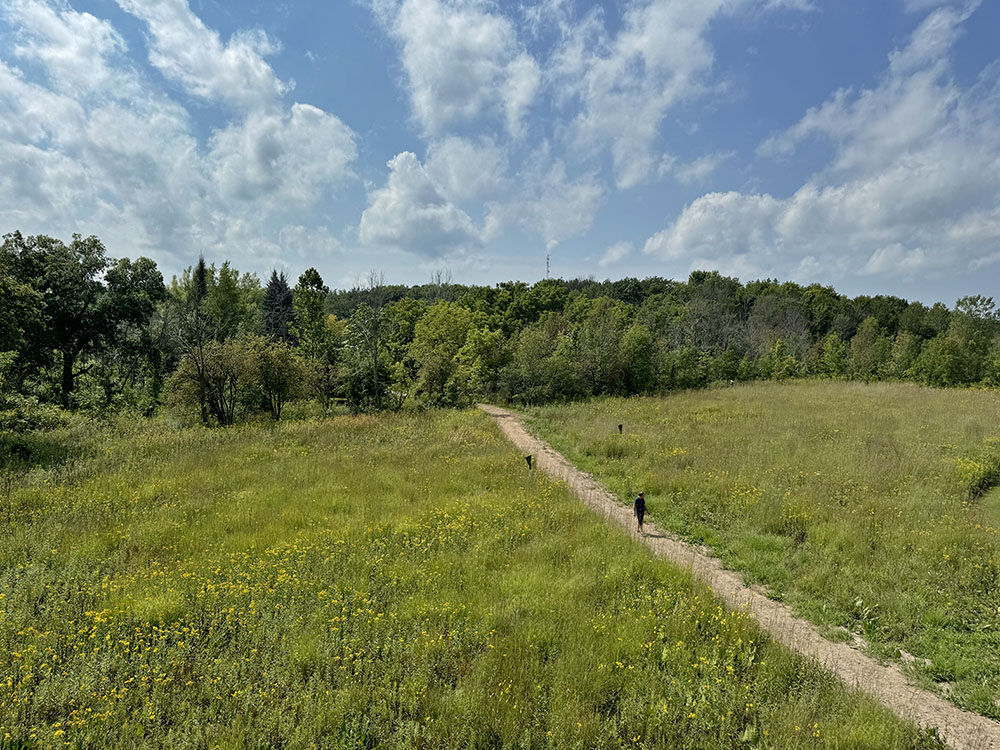
Public cave tours are offered seasonally on Saturdays. More information about Ledge View Nature Center can be found on the Calumet County website.
Related stories:
The Spectacular View from the Ledge!
Hiking the Niagara Escarpment on National Trails Day: Oakfield Ledges SNA
Maquoketa: Reaching Deep into the Niagara
Hawthorn Glen: A Hidden Gem Awaiting Discovery
Eric Fowle is co-founder of the Niagara Escarpment Resource Network and a Lakeshore Natural Resouce Partnership board member. Louise Marum is the Naturalist at Ledge View Nature Center. Eddee Daniel is a board member of Preserve Our Parks.
One thought on "A Cave Adventure at Ledge View Nature Center"
Comments are closed.


Thanks for the article, Eddee. I was not aware of this park.